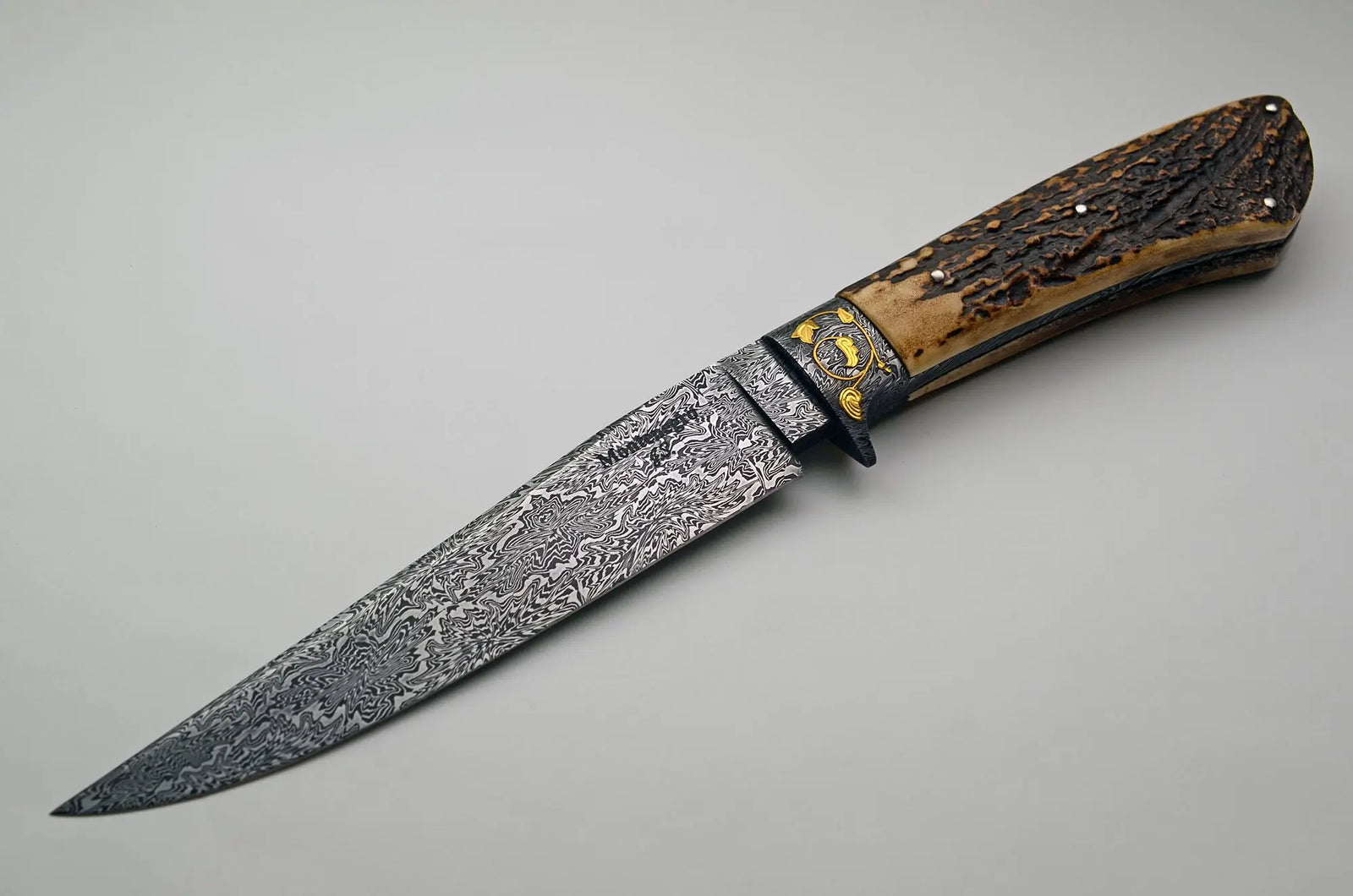Your Cart is Empty
FREE SHIPPING FOR USA

If you’ve invested in a Damascus steel knife, you probably already know how sharp, beautiful, and valuable it is. But what you might not know is that humidity is one of the biggest threats to your blade—even more than cutting bones or improper sharpening.
In this guide, we’ll break down how moisture in the air damages Damascus steel, why it happens, and what you can do to prevent rust, discoloration, or permanent etching. Whether you live in Florida, Seattle, or keep your knives stored in a hot kitchen drawer—this one’s for you.
At the core of every Damascus blade is carbon steel, often layered with other steels like 15N20 or 1095. While this makes the blade ultra-sharp and durable, it also makes it susceptible to oxidation—aka, rust.
Fact: Carbon steel doesn’t contain enough chromium to form a strong rust-resistant barrier like stainless steel.
Triggers oxidation when water vapor in the air clings to your blade
Forms microscopic rust spots you can’t see—until it’s too late
Leads to pitting, which eats into the blade surface
Softens etching, making your Damascus pattern look dull
Even if your blade looks clean, invisible moisture can slowly ruin its structure and finish.
Keep an eye out for these early warning signs:
| Symptom | What It Means |
|---|---|
| 🔸 Dull or cloudy blade pattern | Etching is fading from moisture exposure |
| 🔸 Light orange or brown specks | Surface oxidation (early rust) |
| 🔸 Gritty or rough texture | Possible pitting under the surface |
| 🔸 Blade feels sticky after storage | Condensation or moisture build-up |
| 🔸 Musty smell from storage | Leather sheath or box is holding humidity |
Want to restore a blade already affected? Read: How to Remove Rust from a Damascus Knife
This is your #1 defense. Use a light coat of oil to form a barrier between the blade and air.
Best oils for Damascus knives:
✅ Food-grade mineral oil (inexpensive and odorless)
✅ Camellia oil (traditional Japanese knife oil)
✅ Tsubaki oil (premium option for collectors)
Avoid: Olive oil, coconut oil, or any cooking oils—they go rancid and attract dust.
Don’t just toss your knife into a drawer or keep it in a leather sheath forever.
Tips:
Use a knife block, wood magnetic strip, or vented saya
Drop a few silica gel packs near your blades to absorb moisture
Install a small dehumidifier if your home stays humid year-round
NEVER store a knife in a leather roll or case long-term
Even a few drops of water left on the blade can turn into surface rust.
Pro Tip:
After cleaning your knife, use a microfiber cloth to dry the blade and the handle—especially around the bolster.
If you’re storing your knives in:
A kitchen drawer near a stove
A garage or basement workshop
A sealed glass display case
…then you’re at high risk. Keep your space at 40–50% humidity for blade safety.
If you’ve already spotted early rust, here’s how to fix it before it spreads:
Use a non-abrasive metal polish like Flitz or MAAS
Apply with a soft cloth, polish in small circles, then re-oil
Use 0000-grade steel wool and a few drops of oil
Rub gently in the direction of the blade grain
Consider sending to a professional knife restorer
Pitting is permanent—don’t try to sand it down yourself
🔗 Want the full tutorial? Read: How to Remove Rust on Damascus Steel Knives
| Product Type | Recommendation |
|---|---|
| Oil | Camellia or food-grade mineral oil |
| Desiccant | Silica gel packs (Amazon or knife stores) |
| Storage | Wood saya with ventilation holes |
| Extras | Humidity sensors (cheap & accurate!) |
Your Damascus blade is more than just a kitchen tool—it’s a piece of art, forged by fire and folded steel. Don’t let something as invisible as humidity slowly destroy that craftsmanship.
With just a few simple habits—regular oiling, smart storage, and quick drying—you’ll protect your knife from rust, pitting, and years of hidden damage.